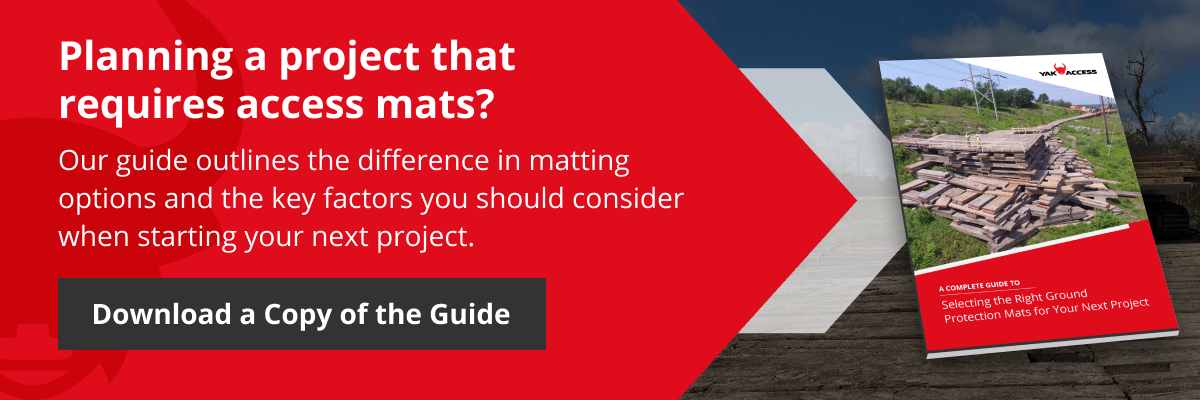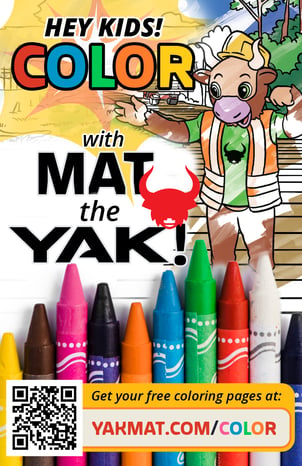Pipeline, power line, and renewable energy projects take place in some of the most remote parts of the country. As crews arrive on-site, they’re ready to roll up their sleeves and get to work. But skipping over the preparatory steps of any access project can cost teams dearly in the long run. Thick vegetation and steep inclines prove treacherous for construction crews without the proper precautions in place.
Whether it’s a pipeline and midstream project, power line transmission and distribution, oil and gas, or civil and general construction, site planning is integral to the process. From roadways and bridges to out-of-the-box infrastructure, invest in complete site planning from start to finish so you can hit the ground running. Meet us at the crossroads of old-fashioned hard work and innovative total access solutions.
Clearing and Grubbing
Once a company has purchased undeveloped land, the timer begins. Land clearing and land grubbing precede gravel roads and concrete foundations. This first step may seem simple, but it’s crucial to the longevity of a broad range of access solutions. Teams begin by surveying the site and then clearing and grubbing the land with a robust set of equipment, including bulldozers, excavators, and hydroseeders.
Land clearing begins with right-of-way clearing, in the case of pipelines and power lines. Teams bring in all-terrain vehicles and equipment to initiate the clearing process, including tractors, grinders, and mulchers. In some cases, teams conduct a controlled burn to clear away thick vegetation.
After the land clearing concludes, land grubbing can begin. Teams excavate stumps, roots, and boulders. They then dispose of obstructive vegetation in compliance with environmental regulations.
Slip Repair and Soil Stabilization
Each project must also include a thorough land assessment. Because terrain can vary greatly, each project requires a slightly different approach and unique site planning strategies. The preparation must be a two-pronged approach. Of course, teams are eager to get to work paving access roads, but environmental protection must come first in order to comply with local, state, and federal regulations.
Teams begin with soil strength and stabilization. Land areas with steep inclinations are especially susceptible to erosion and slip. When foundations fail, groundwater risks contamination. To stave off erosion and water pollution, teams must excavate a slope, reinforce the structure, and add additional drainage. Slip repair is just as important. Teams mend failed embankments and construct retaining walls to protect infrastructure and adhere to environmental regulations.
SWPPP Installation and Maintenance
Environmental compliance is not a one-and-done, check-the-box success, but rather a series of protocols that lead to more environmentally beneficial outcomes over time. Throughout the duration of a project, construction crews must consider the Stormwater Pollution Prevention Plan (SWPPP) to comply with environmental regulations surrounding stormwater pollution as well as the Clean Water Act. The process is extensive and requires regular monitoring by civil contractors and project managers. Although the order may vary slightly, the following provisions must be taken into account:
- Site assessment and planning
- Erosion control and sediment control
- Strategies to eliminate groundwater contamination
- Site inspection practices and schedules
- Required permits and certification
Environmental Compliance Monitoring
Crews continue to monitor environmental compliance long after an access solutions construction project is underway. Whereas contractors likely focus on Best Management Practices (BMP) plan development and Erosion Control Details (ECD) layout planning before construction begins, in the active construction stage, crews will complete those plans, conduct environmental management reviews, and carry out stormwater and pollution prevention inspections.
Even as a complete site access project is in development, crews must plan how they will continue to assess the environmental impact post-construction. This includes things such as environmental and restorative oversight, quality-control inspection and analysis, impacts and recovery planning, and a final BMP and ECD assurance inspection.
Access Matting
To round out your next complete site access project, you’ll need to find the right access matting solution. NEW SOUTH offers full-service temporary access solutions for energy and construction project sites. As a YAK brand, NEW SOUTH creates temporary roads, bridges, and wetland access systems to get jobs done quickly, safely, and cost-effectively.
Reduce your environmental impact without going over budget. NEW SOUTH has access to YAK’s million-mat inventory, so you can find enough mats for your next projects, no matter where you’re located.
At YAK ACCESS, we take our mats just as seriously as we do our mission and values. We understand that the best ideas and most innovative solutions come from people with diverse backgrounds. That’s why we’re dedicated to recruiting team members from all backgrounds, cultures, ethnicities, and genders. When it comes time for new and innovative access solutions, all hands are on deck.
Find out more about our commitment to diversity and inclusion in leadership and in the industry as a whole.




